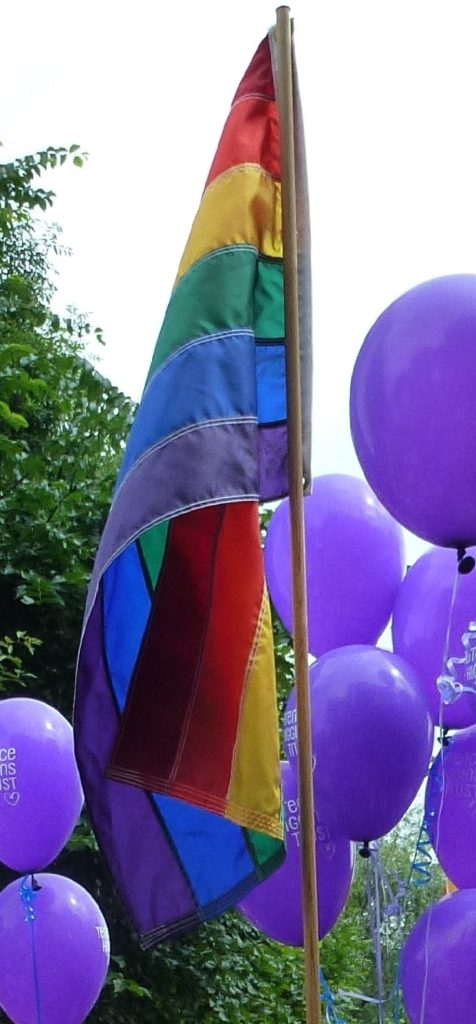How engaging communities could address gay men’s health inequalities
Published: 3 August 2016
Dr Lisa McDaid, Programme Leader for Social Relationships and Health Improvement, MRC/CSO Social and Public Health Sciences Unit and Professor Paul Flowers, MRC/CSO Social and Public Health Sciences Unit offer some critical reflections from their joint research.
Prof Lisa McDaid, Programme Leader for Social Relationships and Health Improvement, MRC/CSO Social and Public Health Sciences Unit and Professor Paul Flowers, MRC/CSO Social and Public Health Sciences Unit offer some critical reflections from their joint research.
Communities come in various, often contested, shapes and sizes. Communities are often forged on the battleground of inequalities, conflict or identity politics and tend to be realised in relation to shared physical space, practices, common interests, and common identity. Perhaps because communities often mark out differences, they are also often central to understanding patterns of health and disease. For the last decades, much of our research has involved focussing upon diverse and varied gay communities. Within this time there has been major change in respect to both disease and to health. For example, the terrible impact of the AIDS epidemic in the 1980s and the blossoming of anti-discrimination and equal rights legislation at the turn of the 20th century.
At the recent Association of Social Sciences and Humanities in HIV (ASSHH) UK conference, we reflected on the future role of community in HIV prevention and health improvement. What kinds of community engagement are possible? How, where and when are communities coalescing or indeed collapsing? How can we as health practitioners, academics or activists make the most of community engagement? How can we learn from lessons of the past to imagine the future?
Changing gay communities
There has been talk of the end of gay community, of us living in a post-gay era. Perhaps the powerful forces of homophobia, heterosexism, or AIDS which forged past gay communities have now reduced so much that social dynamics only necessitate a series of overlapping sexual and social networks. The digital revolution seems to amplify new ways of thinking about communities and recent years have seen significant changes in the structure of gay communities, patterns of socialisation, and the growth of new, varied and often digitalised ways to connect socially and sexually. Equally, HIV prevention which had always demanded co-ordinated joint action by people to choreograph condom use has arguably (in some places at least) been usurped with an individual taking a little blue pill in private. This pervasive sense of increasing individualisation, together with a loss of shared spaces and shared stories, questions the on-going relevance of gay communities today.

The rainbow flag: symbol of LGBT community pride.
Yet community is still a powerful idea. ‘Community’ responses to HIV have long been linked to successful HIV prevention among gay men. Creation of ‘safer sex’ in the 1980s as a response to HIV, rightly credited to gay communities themselves, represents the best recorded evidence of population level behaviour change in any health arena. There is also extensive evidence of the success of peer and community engagement in facilitating sexual health improvement and HIV prevention. We were struck by the recent Lancet editorial that talked about the NHS England PrEP decision re-igniting HIV activism and reinvigorating a profound sense of community. Interesting it is the marked inequalities in HIV risk which again representing a flashpoint for both identity and community. Sexual and other social networks have coalesced to incite social change.
Beyond HIV
Whilst acknowledging the catalytic role of HIV in demanding community responses, at the same time we are coming to recognise that HIV prevention cannot be our sole focus. Above and beyond HIV, gay men experience a multiple burden of ill health in relation to sexual health, mental health and substance use, which rightly deserves more of our attention. Yet to date this has not represented a focus for communities to galvanise and rally on. Equally, in relation to research, few studies have addressed the co-occurrence of psychosocial problems, substance use, and sexual and mental ill health and none of the available evidence considers the delivery of multiple ‘tried and tested’ interventions in tandem. Even the Public Health England Report on ‘Promoting the health and wellbeing of gay, bisexual and other men who have sex with men is only able to set out interventions that address sexual health, mental health and substance use separately. In our opinion, current health improvement efforts are characterised by disjointed health services and single outcome interventions and, as such, have no hope of generating sustained impact on the complex inter-related health inequalities experienced by gay men. Instead, these complex problems will require complex, multi-level interventions.
A new approach?
Moreover, we would do well to remember that many of the changes in recent years are positive: increased equality; the potential for reduced social isolation; and additional means of preventing HIV. Perhaps our health improvement efforts would similarly benefit from shifting our focus from the negative to the positive, from ill health to wellbeing. Is it time to think again about community engagement and advocate a different approach? One that is grounded in and focuses on the strengths and resiliencies of the communities we wish to engage with? The Fenway Institute of Boston and the University of Pittsburgh Center for Lesbian, Gay, Bisexual and Transgender (LGBT) Health Research have advocated such an approach and we are inclined to agree with them. Could understanding ‘resilient’ community responses and capitalising on these be the key to reducing health inequalities among gay men? We would certainly like to think so.
Disclaimer: The views expressed in this blog are those of the authors. It draws on work presented with Ingrid Young and Nicola Boydell at the Association of Social Sciences and Humanities in HIV (ASSHH) UK conference in June 2016.
This research was funded by the Medical Research Council and the Scottish Government Chief Scientist Office.
First published: 3 August 2016

